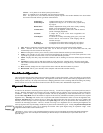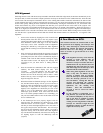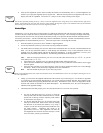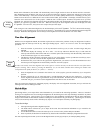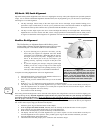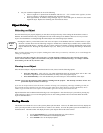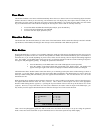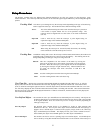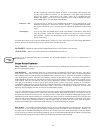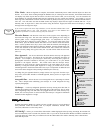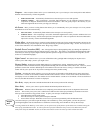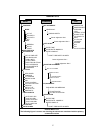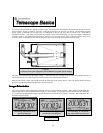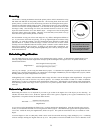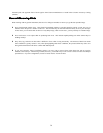23
S
SS
S
S
SS
S
e
ee
e
e
ee
e
t
tt
t
t
tt
t
u
uu
u
u
uu
u
p
pp
p
p
pp
p
P
PP
P
P
PP
P
r
rr
r
r
rr
r
o
oo
o
o
oo
o
c
cc
c
c
cc
c
e
ee
e
e
ee
e
d
dd
d
d
dd
d
u
uu
u
u
uu
u
r
rr
r
r
rr
r
e
ee
e
e
ee
e
s
ss
s
s
ss
s
The NexStar contains many user defined setup functions designed to give the user control over the telescope's many
advanced features. All of the setup and utility features can be accessed by pressing the MENU key and scrolling through the
options:
Tracking Mode This allows you to change the way the telescope tracks depending on the type of mount being
used to support the telescope. The NexStar has three different tracking modes:
Alt-Az
This is the default tracking rate and is used when the telescope is placed on
a flat surface or tripod without the use of an equatorial wedge. The
telescope must be aligned with two stars before it can track in altazimuth
(Alt-Az).
EQ North
Used to track the sky when the telescope is polar aligned using an
equatorial wedge in the Northern Hemisphere.
EQ South
Used to track the sky when the telescope is polar aligned using an
equatorial wedge in the Southern Hemisphere.
Off
When using the telescope for terrestrial (land) observation, the tracking
can be turned off so that the telescope never moves.
Tracking Rate In addition to being able to move the telescope with the hand control buttons, the NexStar will
continually track a celestial object as it moves across the night sky. The tracking rate can be
changed depending on what type of object is being observed:
Sidereal
This rate compensates for the rotation of the Earth by moving the
telescope at the same rate as the rotation of the Earth, but in the opposite
direction. When the telescope is polar aligned, this can be accomplished
by moving the telescope in right ascension only. When mounted in Alt-
Az mode, the telescope must make corrections in both R.A. and
declination.
Lunar
Used for tracking the moon when observing the lunar landscape.
Solar
Used for tracking the Sun when solar observing.
View Time-Site - Displays the current time and longitude/latitude downloaded from the GPS receiver. It will also
display other relevant time-site information like time zone, daylight saving and local sidereal time. Local sidereal time
(LST) is useful for knowing the right ascension of celestial objects that are located on the meridian at that time. View Time-
Site will always display the last saved time and location entered while it is linking with the GPS. Once current information
has been received, it will update the displayed information. If GPS is switched off, the hand control will only display the
last saved time and location.
User Defined Objects - The NexStar can store up to 400 different user defined objects in its memory. The objects can
be daytime land objects or an interesting celestial object that you discover that is not included
in the regular database. There are several ways to save an object to memory depending on
what type of object it is:
Save Sky Object: The NexStar stores celestial objects to its database by saving its right ascension and
declination in the sky. This way the same object can be found each time the telescope is
aligned. Once a desired object is centered in the eyepiece, simply scroll to the "Save Sky
Obj" command and press ENTER. The display will ask you to enter a number between 1-
200 to identify the object. Press ENTER again to save this object to the database.
Save Land Object: The NexStar can also be used as a spotting scope on terrestrial objects. Fixed land objects
can be stored by saving their altitude and azimuth relative to the location of the telescope at




